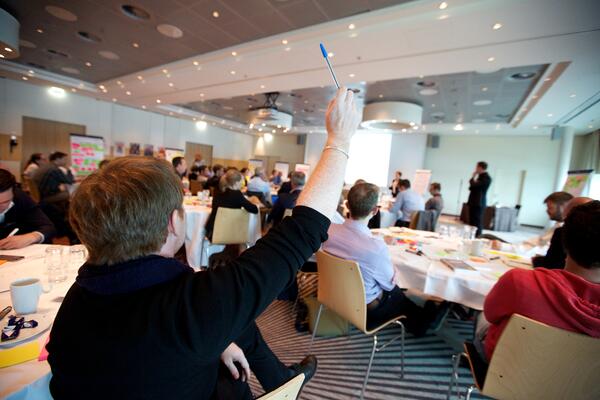Is Your Communications Plan Telling or Communicating?

3 Mins
Updated: March 2, 2024
Published: September 14, 2022

We can all agree that effective communication is critical to change management efforts. In fact, change practitioners have named it a top contributor to project success in Prosci's Best Practices in Change Management research for more than 20 years. Unfortunately, during times of change organizations often develop and execute communications plans without regard for a change management framework or perspective. Communications serve an important purpose in project management and other processes, but change management communications differ from these communications in significant ways.
Prosci's change management training programs give you the knowledge, skills and tools you need
for effective communication during organizational change—and much more.
Telling Versus Communicating
A communications plan that is not part of a bigger change management approach usually won't produce positive results toward managing the people side of change. Instead, such plans result in a telling plan rather than a communications plan. Effective change management communications must target a particular audience, share why the change is happening, address their specific concerns, and meet the audience where they are in the change process. The timing, content and sender of the messages are also important during change.
The change management communications plan is uniquely effective for four reasons:
1. It's part of a master plan
These plans are part of a holistic, robust change management approach that includes a Master Change Management Plan deliverable made up of other change management plans, such as the Sponsor Plan (specific activities required by senior leaders), People Manager Plan (how managers and supervisors will engage their teams), Training Plan (knowledge and skill-building for people to adopt the change), and Communication Plan (identifying audiences, developing key messages, and determining the frequency of communications, delivery mechanisms and senders).
2. It's part of an overall change management process
Prosci's 3-Phase Process occurs in three phases:
Before you develop the communications plan in Phase 2 – Manage Change, you must complete the strategic work that takes place in Phase 1 - Prepare Approach by assessing your unique situation and defining what a successful future state looks like for your project or initiative. This strategy work helps you avoid the mistake of creating your communications plan in a vacuum. The result is a strong situational awareness and appreciation for the specific project risks and challenges.
3. It's built on a foundation of individual change
The Prosci ADKAR Model describes the stages individuals move through as they experience change change. For people to transition successfully, they must have Awareness, Desire, Knowledge, Ability and Reinforcement. Communications built on this premise are grounded in the fact that organizational changes only happen when each individual adopts and uses the required changes in their day-to-day work.
4. It focuses on "them" and not "us"
The communications plan must focus on impacted people and teams—those who must adopt and use the change in their work to make the project successful. This is an important distinction. A communication plan that focuses on "us" usually results in an ineffective telling plan. However, when change management guides communication efforts, you shift away from telling employees what a project is doing and toward answering the questions and concerns impacted employees have, which puts the focus on "them."

Communications With and Without Change Management
The change management communications plan has very specific intent, focus, frequency, methods and senders. When organizations develop the communications plan without change management, difficulties arise in each of these areas and can sabotage project success.
| Intent | ||
| With change management | Communications designed to build awareness and engage employees in the process | |
| Without change management | Communications that come from "us" and tell "them" what we're doing | |
| Focus | ||
| With change management | Answers key questions: "Why is the change happening?" "What's in it for me (WIIFM)?" "What's the risk of not changing?" "What are the organizational benefits?" |
|
| Without change management | Project details, design details, status and progress updates, and milestones | |
| Frequency | ||
| With change management | High frequency with repetition of key messages | |
| Without change management | Dictated by project milestones | |
| Methods | ||
| With change management | Face-to-face interactions, discussions, and a variety of media (always two-way communications) | |
| Without change management | Broadcast messages (typically one-way communications) | |
| Senders | ||
| With change management | Sponsors and people managers | |
| Without change management | Project team members and communications specialists | |
If you are communicating without change management, this checklist can help. Although it's no substitute for a holistic change management approach, it can be useful for aligning your communications with effective change management techniques.
Stop Telling and Start Communicating
When project teams say they already have a communications plan for project changes, we often find that they have developed a plan to tell others in the organization about their work, their progress and their plans. But "telling plans" like this usually don't lead to successful outcomes during change. Instead, aligning your communications with a reliable change management framework helps you avoid negative consequences and set up your organization for change success.



